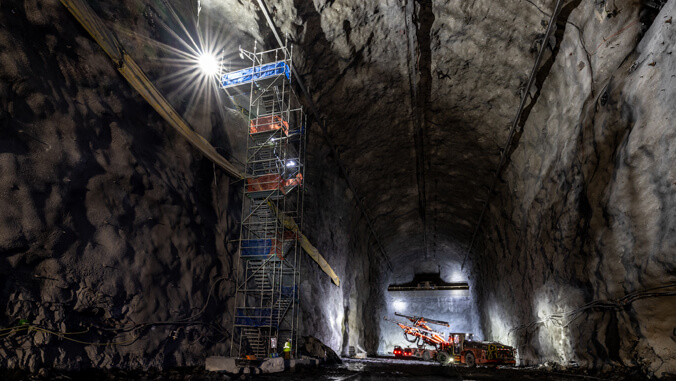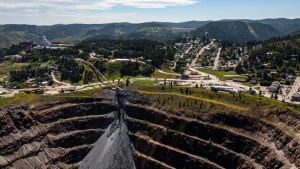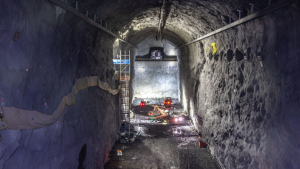
Excavation workers have finished carving out the future home of the gigantic particle detectors in South Dakota for the international Deep Underground Neutrino Experiment (DUNE), marking a major step forward for the project.

DUNE scientists, including experts from the University of Hawaiʻi at Mānoa, will study the behavior of mysterious particles known as neutrinos to solve the biggest questions about our universe. Some of the questions are: Why is there an excess of matter over antimatter in the universe? How does an exploding star create a black hole? Are neutrinos connected to dark matter or other undiscovered particles?
UH Mānoa physicists are responsible for the calibration of the gigantic detectors to validate and tune their performance. The project is hosted by the U.S. Department of Energy’s Fermi National Accelerator Laboratory.
“With the completion of the caverns ready to receive the detectors, there is a lot of excitement in finally bringing these largest ever-built contained neutrino detectors to life,” said DUNE scientist and UH Mānoa Department of Physics and Astronomy Professor Jelena Maricic. “The findings from DUNE have the potential to reshape our comprehension of the cosmos, offering insights that may transcend the realm of physics and impact our broader understanding of existence.”
Colossal underground caverns, exploding star particles

Located a mile below the surface, the four colossal caverns are at the core of a new research facility that spans an underground area about the size of eight soccer fields. The caverns provide space for four large neutrino detectors—each one about the size of a seven-story building. The detectors will be filled with liquid argon and record the rare interaction of neutrinos with the transparent liquid.
Trillions of neutrinos travel through our bodies each second without us even knowing it. DUNE scientists will look for neutrinos from exploding stars and examine the behavior of a beam of neutrinos. The beam, produced by the world’s most intense neutrino source, will travel straight through Earth and rock from Fermilab to the DUNE detectors in South Dakota. No tunnel is necessary for the neutrinos’ path.
Workers will soon begin to outfit the caverns with the systems needed for the installation of the DUNE detectors and operations of the research facility. Later this year, the project team plans to begin the installation of the insulated steel structure that will hold the first neutrino detector. The goal is to have the first detector operational before the end of 2028.
The DUNE collaboration, which includes more than 1,400 scientists and engineers from over 200 institutions in 36 countries, has successfully tested the technology and assembly process for the first detector at CERN (European Organization for Nuclear Research), Switzerland. Two thousand-ton liquid argon prototypes called ProtoDUNEs have been built for this purpose, and this is where the UH group tested its calibration hardware.
The Department of Physics and Astronomy is housed in UH Mānoa’s College of Natural Sciences.

